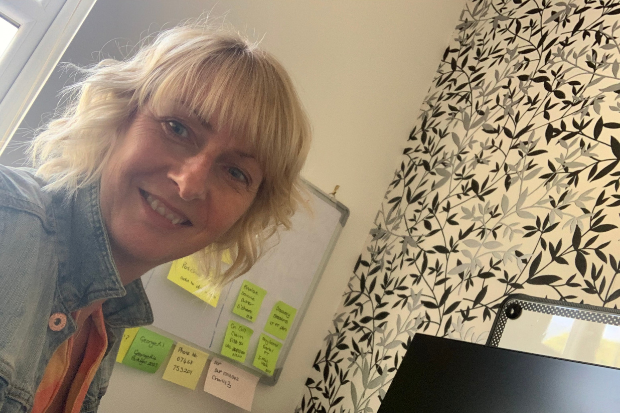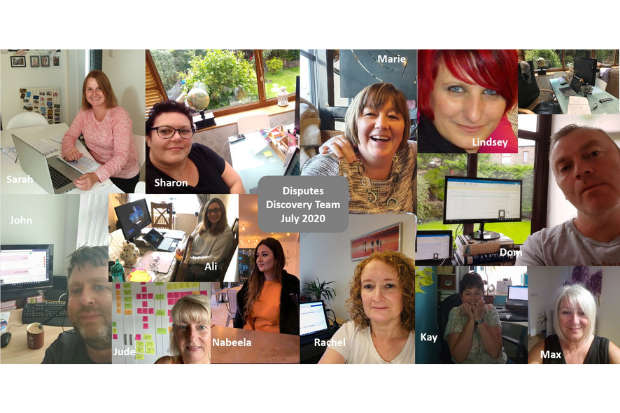
If you’ve ever been lucky enough to be part of a discovery sprint, you’ll know how insanely intense they can be, yet equally fun and rewarding. Everyone is in it together, face to face in a large room, surrounded by Post-It notes and Sharpies, understanding the problem to address, identifying the pain points, proposing and validating solutions.
So being asked to lead a rapid discovery in the middle of a pandemic, with everyone scattered around the country and only a Skype connection to join us together was challenging.
With a few simple steps we’ve amazed ourselves with how much we’ve achieved and the extremely positive feedback from participants – one colleague commented that it was the “best discovery ever”! It wasn’t always easy, so by sharing our experiences, the positives and the pitfalls, we hope to inspire others to run remote rapid discoveries. Here are our top tips.
1: Find the right tools
Once we had our clear purpose, finding ways to communicate and collaborate remotely was the first challenge. How might we run the discovery sessions if we weren’t all together, capture the conversation and create a repository for all to see?
After some trial and error with audio quality in Teams, we compromised on a combination of Teams for the visual sharing and organising of content offline, with Skype for the audio / video communication. and presenting the content in Teams online.
Whilst Skype was proven and accessible to all, Teams was new territory. Top tip - ask for the help of experts setting up and test, test, test! We quickly learnt how to create an online team environment, to work collaboratively and organise a tonne of content in one space, but we couldn’t have done it as effectively without help and making sure it all worked upfront!
We also created a WhatsApp group for our own internal core team communications. This was handy for asking a quick question, or sharing a problem when in sessions without all the attendees knowing – priceless!
The biggest miss from our traditional discovery sessions was a sketching tool to express ideas and concepts. This allows us to mock-up scenarios, storyboards and validate customer journeys or navigation flows – we’re still working on this for our remote sessions.
2: Plan, plan & plan
Whilst you can overthink this part of the process, never under-estimate the importance of planning! Having a clear agenda, with sessions planned and calendar invites sent to previously identified stakeholders, is essential. Briefing sessions beforehand to manage expectations so you can get a good start on day one, having ironed out any questions, are invaluable.
Another top tip - If you’re not ready, don’t start! We made the difficult decision to delay by two weeks. It was the best outcome as we were far more effective executing the discovery as a result, simply because it allowed us to ensure that everything was set up correctly in Teams
3: Involve the right people in the right way
Conducting the discovery was about getting a common understanding of the problems and ensuring any recommendations would be right for the users. We needed to rely heavily on the end users and customers, so identifying all the areas and roles impacted and who our best people are was crucial. We then invested the time in getting the buy-in to have them involved, being clear on what, why and when.
Top tip - it’s better to involve less people! Having the right person represent each area was far more productive that inviting a cast of thousands when working remotely. We still get a representative view, whilst also allowing those representatives to go back to their areas and gather more feedback and bring it back to later sessions. Encouraging everyone’s engagement and participation is much easier in small groups.

4: Create an engaging environment
It’s always harder creating that engaging environment remotely. We used ice breakers and personal profiles to help us get to know each other better at the start, hand-held people through the technology and signposted lots so everyone felt at ease. Teams also played a big part as it was set up to be really open, collaborative and transparent whether in sessions or not.
For stakeholders we shared up front how and when we’d share back, with weekly show and tells, access to Teams to see what we were up to and a dial in for 30 minutes at the end of every day for anyone who wanted an update or to share feedback. This level of transparency was really well received given how remote we were.
Top tip - use visuals as people tend to get lost without them, and ensure there’s a facilitator and assistant to guide the session. It’s also important to be flexible with timings if you’re having good, relevant conversations, and split sessions up with lots of breaks!
5: Give yourselves enough time
Finally, we learnt quickly that we needed more time for everything when working remotely. Be ready to flex the agenda as you go through the discovery. A rapid discovery in four weeks for such a big topic was always going to be a challenge. I’d suggest allowing a minimum two weeks prep time, six weeks discovery and two weeks to summarise for any governance forums.
Final top tip - say no, put Do Not Disturb on Skype and switch off emails! Whilst remote you are still online and potentially accessible compared to being hidden away in a room during a normal discovery session. It’s easy to get distracted, so it’s important to remove the temptations and focus.
A remote discovery comes packed with challenges but also has benefits, the obvious one being that people are more efficient with their use of time, costs and resources. In addition, they can be easier to coordinate and perform in small impactful iterations. Agendas don’t have to be blocked for the full period, allowing more key stakeholders to join.
Whilst you can never take away the value of being together face to face, remote sessions can be as efficient and effective as being the in the same room. Perhaps a hybrid approach of both could work in the future.
